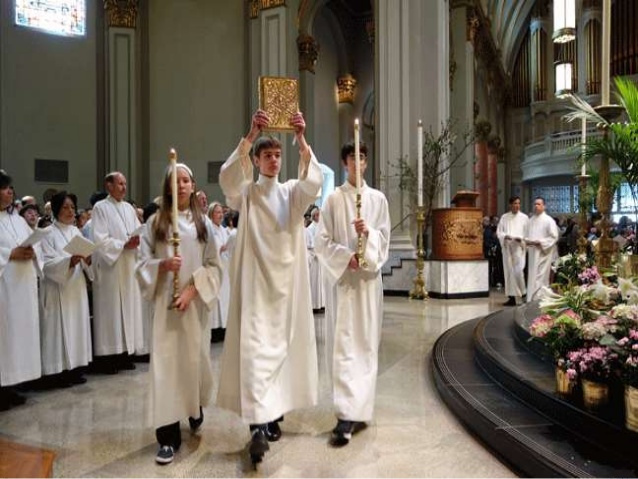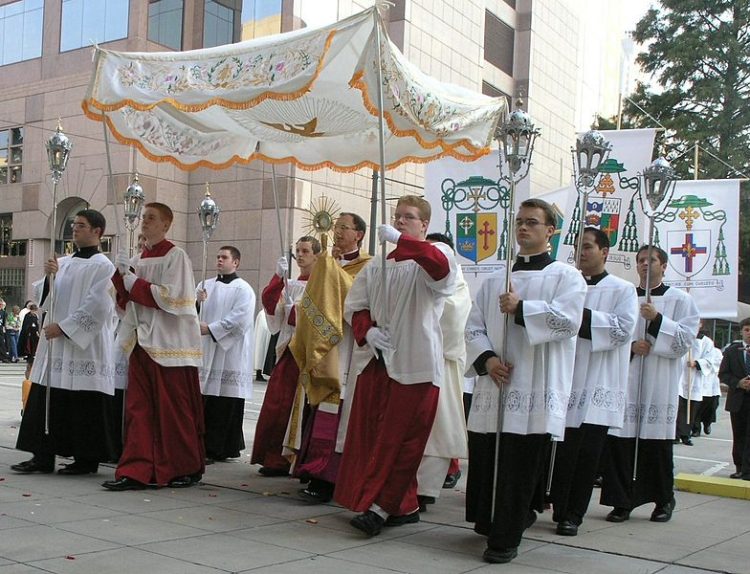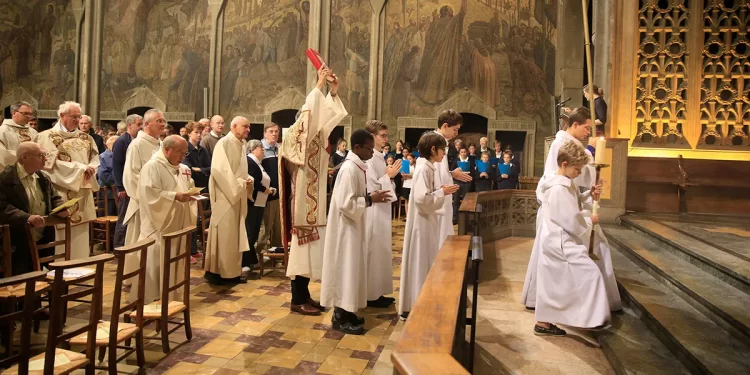Over the years I’ve answered questions about particular issues regarding parts of the liturgical rite. I’ve gathered some of those questions and answers here. They include:
the sign of the cross at invocations and benedictions;
the response to the readings;
the use of the so-called ecumenical creeds,
the ritual surrounding the offertory;
the value of using a full Eucharistic prayer;
the purpose and meaning of the breaking of bread;
the use of Communion distribution formulas.
The Use of the Sign of the Cross at the Invocation
Question:
It may just be my growing curmudgeon -ess, but increasingly I am watching the sign of the cross at the invocation being made as if it is a blessing for the congregation. A “blessing” of the pandemic is the opportunity to see multiple pastors at work, including my own bishop, and he and many others are doing this. Outside of page 117, “The Sunday Assembly,” and it’s instruction, my own understanding is that it is a remembrance of my baptism. I am not certain that I could, or should, give a satisfactory explanation as why this use of the Invocation as a blessing is not appropriate (or so it feels to me). Or perhaps there is some use of this I am unfamiliar with. I am wondering if you might provide that background and explanation for the sign of the cross and the invocation?
Answer:
Your understanding is correct. The sign of the cross is used in connection with the Trinitarian Name as a remembrance of baptism. In the ancient catechumenate the sign of the cross was the first sacramental sign given to those who were beginning their journey to the font, where they would be joined to Christ in his death and resurrection. St. Augustine of Hippo, for example, received the sign of the cross as an infant even though he wasn’t baptized until age thirty. Even not yet baptized he considered himself a Christian because he bore on his brow the sign of the cross.
An invocation is a prayer for God’s blessing on us. Hence it is made on our own body, including by the presiding minister. A benediction is a word of promise spoken by the presiding minister to the congregation. Hence the sign of the cross is made over the congregation by the presiding minister; the worshipers apply that blessing to themselves by making the sign of the cross on themselves. Lutheran pastors seem confused about this. Perhaps it would help to differentiate the invocation as a prayer (we all pray together — in the older books facing the altar) and the benediction as a word of proclamation (in the older books the PM faces the congregation) . Perhaps PMs got confused with the free standing altar. But there’s still a difference between prayer and proclamation.
I would add that if the presiding minister invokes some other name or designation of God or places the blessing of some other name or designation of God than “Father, Son, and Holy Spirit,” as a worshiper I do not make the sign of the cross on myself because that is not the name in which I was baptized. That includes “Creator, Redeemer, Sanctifier” (a job description for a deity) or “holy Trinity, one God” (a theological affirmation). These are not names.
There are other practices. For example, in the Byzantine Liturgy the entrance rite begins with the priest or bishop blessing “the kingdom of the Father and of the Son and of the Holy Spirit.” At that those words the priest makes the sign of the cross with the Gospel Book over the altar space. Originally it marked the beginning of the entrance procession and taking possession of the worship space for the kingdom of God. Those attending bow their heads deep and low, making the sign of the cross on themselves in the Eastern way, seeking the blessing “of the Father, Son, and Holy Spirit.” Perhaps the same gesture would apply in The Book of Common Prayer (1979), Rite 2, when the presiding minister says, “Blessed be God: Father, Son, and Holy Spirit,” and the people respond: “And blessed be his kingdom, now and forever. Amen” — the presiding minister making the sign of the cross with the Gospel Book over the altar before placing it on the altar.

The Response to the Readings, “Thanks be to God”
Question: When did Lutherans start ending their readings during the Liturgy of the Word by saying, “The Word of the Lord. with the response: Thanks be to God? Why the change?
Answer:
The custom of announcing the lessons goes back to the twelfth century. When the custom began of announcing the end of the readings is uncertain. The first and subsequent editions of the Book of Common Prayer concluded readings in the daily prayer offices with “Here endeth [such a] chapter of [such a] Book.” The custom was carried over to the Epistle in the Service of Holy Communion. Lutheran worship books in English picked up this custom of announcing the end as well as the beginning of the reading. The Common Service Book (1918) and the Service Book and Hymnal (1958) had: “Here endeth the Epistle of the Day.” The SBH had added an Old Testament Lesson and it was concluded with the words, “Here endeth the Lesson.” The idea was catching on among the Western Churches that the people should respond to the readings. To say “Here endeth the Lesson” with “Thanks be to God” didn’t seem appropriate. When the Roman Missal of Paul VI was promulgated in 1969 (in English in 1970), the response to Scripture readings except the Gospel was: “The Word of the Lord. R/ Thanks be to God.” With the adoption of versions of the Roman Lectionary during the 1970s this response was incorporated into the worship books of other denominations, including Lutheran Book of Worship (1978). It has become an ecumenical response that is familiar in now in a number of Protestant traditions. With Evangelical Lutheran Worship (2006) other words have been added as options, such as “Word of God, word of life.” Why? I don’t know.
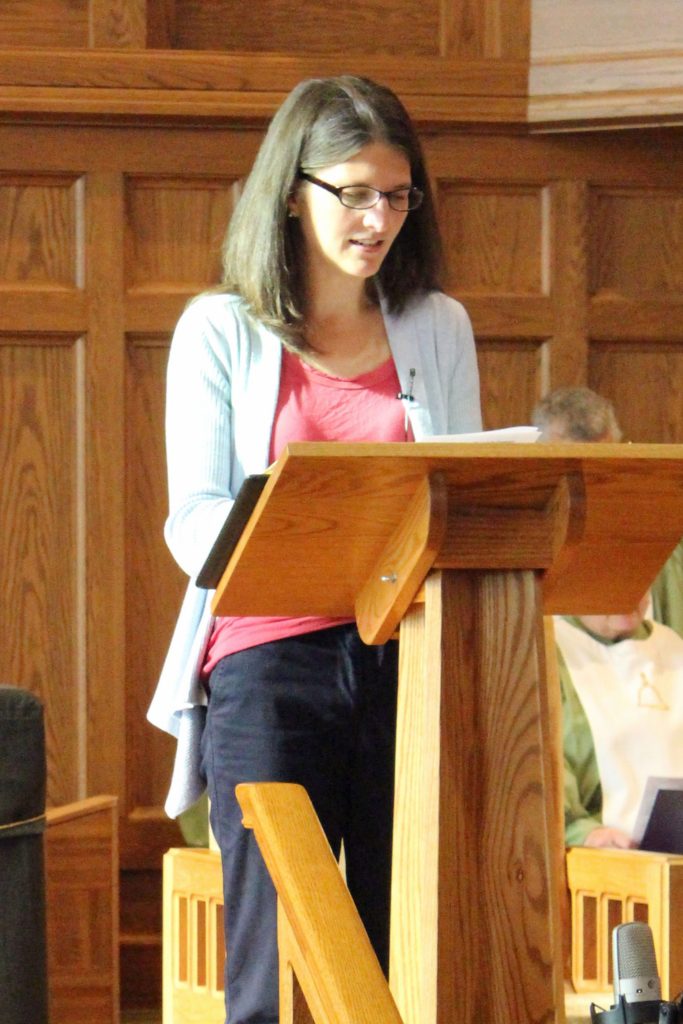
Use of Creeds
Question: I’ve experienced different creeds being used on different Sundays, sometimes no creed being recited, and sometimes a new creed being said. What guidance is there on the use of creeds in the liturgy?
Answer:
The historic creeds developed for different purposes. The Apostles’Creed was a profession of faith used at baptism, usually in interrogatory form. “Do you believe in God the Father? I believe in God the Father almighty, creator of heaven and earth.” The Nicene-Constantinopolitan Creed was the product of ecumenical councils to nail down Christian orthodoxy amid heretical challenges. Hence, the conciliar text begins “We believe” rather than “I believe.” By the sixth century it was used in the Eucharistic liturgy in the Eastern Churches. The so-called Athanasian Creed was a teaching text. “Whoever wishes to be saved should think thus about the Trinity. We worship one God in Trinity and the Trinity in unity.”
In the Western (Roman) tradition since about the eleventh century, the Nicene Creed has been recited after the Gospel on Sundays and festivals. The Creed has not been used on non-festival weekdays. The Apostles’ Creed has been used in baptisms. But because the Apostles’ Creed was a catechetical text sometimes used in the pulpit office of Prone in the late Middle Ages, Protestants used it as the regular Creed on Sundays. Anglicans and Lutherans continued to use the Nicene Creed when Holy Communion was celebrated. With the increased frequency of celebrating Holy Communion every Sunday, there was concern that congregations would loose the use of the Apostles’ Creed. So Lutherans have used the Apostles’ Creed on ordinary (green) Sundays and the Nicene Creed on other Sundays. It became customary to use the so-called Athanasian Creed on Trinity Sunday at Matins. Then it was recited at the Communion Service on Trinity Sunday. Now it is seldom recited at all. In part, this may be because the text is not in Evangelical Lutheran Worship because of its length and, more likely, because its condemnatory clauses are considered offensive. Lutherans also received from Martin Luther the chorale versions of the Creed that he wrote and composed for his German Mass. (In historic Lutheran use the Nicene Creed continued to be recited in Latin by the clergy or chanted by the choir into the eighteenth century.)
As for new creeds, my liturgy processor, Fr. Aidan Kavanagh, OSB, said he would not recite a creed no one bled over. The point is that the Creeds of the Church represent an orthodox/catholic/evangelical (right teaching/universal/gospel professing) statement of faith that demands belief from those who identify with it. Getting these statements nailed down entailed a theological struggle and a hard-won consensus. We don’t know where new statements come from, but they must be judged against the doctrinal, ecumenical, and gospel-centered standards of the historic creeds. I have experienced statements of faith that variously failed to proclaim Christ’s saving death and life-giving resurrection, the Holy Spirit’s creation of the church, and the hope of the resurrection of the body and eternal life. Pastors have no right to inflict deficient confessions of the full Christian faith on an unprepared congregation. It would be better to recite no creed than one that short-changed the saving gospel.
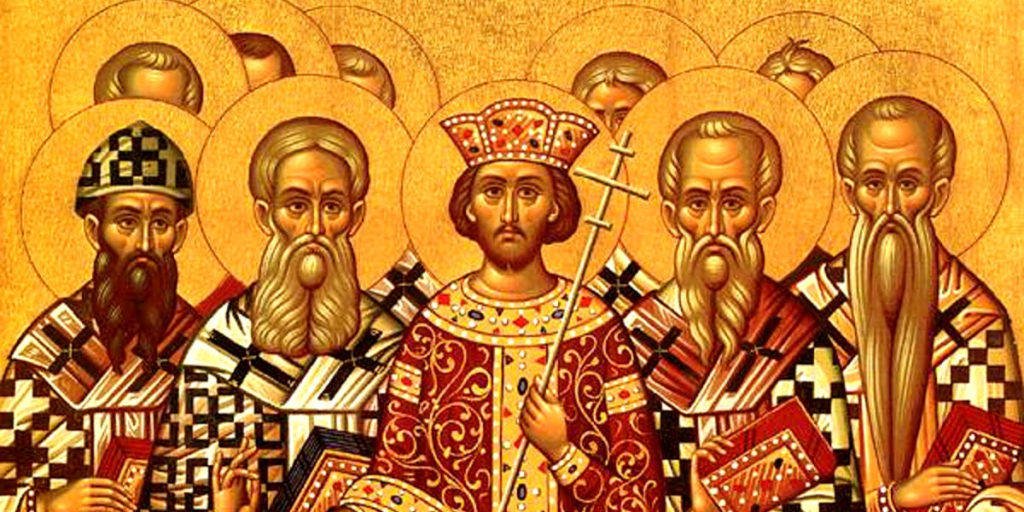
Offertory Ritual
Question:
An ongoing question in our parish is about the necessity, or lack thereof, for two actions; “Is an offertory canticle necessary after either a hymn or another musical offering,” and “Is it necessary for the assembly to rise as the gifts are presented?” For more clarity, occasionally when a hymn or hymn anthem is sung, the offertory canticle has been omitted, and the assembly stands and sings the final stanza of the hymn as the gifts are presented. This causes some confusion for our ushers, as well as the assembly. Our pastor would like to get rid of a separate canticle altogether and simply have the ushers collect the offering and then come forward and present the gifts, simultaneously with any musical offering or hymn, and then have the assembly stand at the Great Thanksgiving, when no Offertory Prayer is used. When we have tried this, occasionally there are a few folks who stand as the gifts are brought forward, due to habit. Maybe a couple of better questions are, “Is it better liturgical practice for the assembly to stand and sing a separate offertory canticle as the gifts are presented,” and “Is the assembly standing during the presentation a liturgical function, and if so, does ending this action constitute poor liturgical practice?”
Answer:
Considering how fussy Lutherans can be about offertory ritual, it is ironic that Martin Luther and early Lutheran church orders omitted the offertory completely. Luther called it “tota illa abominatio” (“that total abomination”) because it was the point at which the faithful paid stipends for votive masses (masses of special intention). In early Lutheran mass orders the altar and sacramental elements were prepared during the singing of the Creed and the faithful deposited monetary offerings for the common chest (poor box) when they came forward to receive communion. Today in Lutheran services the offertory is a very big ritual.
If we look back to the practice of the ancient Roman Church, the offertory constituted a big procession of the faithful who brought forward to the clergy gifts of bread and wine, oil and candles, and other items used in the Divine Liturgy. To cover this movement throughout the basilica the choir (Schola Cantorum) sang psalms appointed as propers for the day. The liturgical action didn’t cease while people just listened to the choir.
What would make liturgical sense is that whatever is sung at the offertory covers the action of gathering the gifts and setting the table. That may be a choir anthem (chosen for its appropriateness to that day in the church year calendar and lectionary) and/or a hymn sung by the congregation and/or a psalm or canticle. The amount of singing depends on how much music is needed to cover the action of gathering and presenting the offering. It may fluctuate depending on the day in the liturgical year and the expected attendance as well as whether there is a choir anthem and how long or short it is. These variables can be known in advance of preparing an order of service. The people may remain seated during all of this and the gifts (including the bread and wine) are brought forward to the ministers as soon as the ushers/gift bearers are ready to do so. They don’t need a special signal. The people stand for the offertory prayer or Great Thanksgiving.
For what it’s worth, in the Episcopal Church I attend we usually have (and need) both a choir anthem and a congregational hymn. The congregation stands for the Eucharistic prayer, not for the presentation of the gifts and setting of the table.
By the way, the monetary offerings are simply placed on the altar or on a credence table. They don’t need to be heaved up in a grant elevation. Only the bread and cup are elevated at the concluding Doxology of the Eucharistic prayer.

The Eucharistic Prayer
Question: In the various congregations I’ve served, some would pray the Thanksgiving at the Table (with Words of Institution), others the Words of Institution only. (Curiously, they all have been formerly LCA congregations.)
At seminary, the prof encouraged the Thanksgiving at the Table, but Midwestern piety seems to find that too fancy, too long, “we don’t know the words,” or “too Catholic.”In one congregation, we re-crafted the seasonal Thanksgiving at the Table to be a back and forth litany between the pastor and the assembly. I guess I don’t know enough of the theology of the Thanksgiving at the Table in Lutheranism to discern if that is “permitted”?! It did help keep the assembly engaged in what otherwise was perceived as “something the pastor does up there.”
Help! Thanks.
Frank answers:
This is a big liturgical issue for Lutherans that we have gone around and around on since the mid-20th century. I can’t unpack it all here. A lot of the historical information is in my big book, Christian Liturgy — Catholic and Evangelical (Fortress 1997), which has been used as a textbook in some Lutheran seminaries. More recently I published Eucharistic Body (Fortress 2017), which deals with the eucharistic prayer or anaphora in its various parts.
Liturgical scholars had done a great deal of work on the history, theology, and spirituality of the eucharistic prayer throughout the twentieth century. About mid-century new eucharistic prayers were being composed and incorporated into worship books. The Service Book and Hymnal of the Lutheran Church in America (1958) included a eucharistic prayer attributed to Dr. Luther D. Reed. The Worship Supplement to the The Lutheran Hymnal from the Commission on Worship of the Lutheran Church–Missouri Synod (1969) included three full eucharistic prayers. The new Roman Missal (1969) was promulgated with four eucharistic prayers (the Roman Canon amended and three new prayers). Denominational worship books thereafter offered multiple eucharistic prayers.
The chances are you don’t use the Words of Institution alone. You probably also include the Preface (with its proper) and Sanctus. This is all part of the Great Thanksgiving. In my view using a full eucharistic prayer opens up the fuller range of eucharistic meaning. Has you congregation considered that the eucharistic prayer expresses a worldview? In its various parts it includes elements of cosmology, praise of the Father in creation; salvation history in the remembrance of the Son; interconnections in the invocation of the Holy Spirit for the blessings of communion that evoke the fellowship (koinonia) of the church. There are also touches of eschatology in this meal that is a foretaste of the feast to come. You could do a whole systematic theology on the basis on a full eucharistic prayer. Your congregations, like most, have not been taught this by your predecessor. But there’s no reason you can’t begin to rectify this deficit by providing the catechesis that’s needed. My Eucharistic Body could be a helpful resource.
There’s no problem with litanizing the eucharistic prayer. Great Thanksgivings I and II in Lutheran Book of Worship did this by providing several congregational interjections: the Sanctus, the Memorial Acclamation, the Maranatha (“Amen. Come, Lord Jesus.”), the Epiclesis (“Amen. Come, Holy Spirit.”), and the concluding Trinitarian Doxology. Some of the eucharistic prayers in Evangelical Lutheran Worship do the same. These congregational interjections can also be sung, just like the Sanctus and concluding Doxology. Is God worthy of our praise and thanksgiving? Yes? Then don’t withhold it!

Controversy over Breaking the Bread
Question: My seminary professor taught us that Lutherans don’t do the fraction (breaking the bread) because that’s a Reformed practice. Yet our worship books call for it. What’s your view on the fraction?
Answer:
Lutherans had issues with the fraction from two directions. The ceremony of the fraction in the Roman Mass took place after the Lord’s Prayer and its embolism. Originally it was intended to break the bread for distribution. Since this took time, the Agnus Dei hymn was added to cover the action of breaking the bread. By the later Middle Ages the loaves had become hosts. The priest broke the large host into three parts, to which symbolic meanings were attached in the commentaries: one part commingled in the chalice with the blood of Christ represented the body of Christ at the resurrection; the second part for the celebrant’s own communion represented the body of Christ here on earth; the third part, intended for the communion of sick, represented Christ’s body in he grave. None of the pieces were for the communion of the people. The people didn’t even see the action of breaking the large host, but many sermons were preached on its symbolic significance.
The Protestant reformers emphasized the communion of the people in both kinds. Luther retained the elevation of the host for a time and the singing of the Agnus Dei during the distribution rather than during the fraction, along with other hymns. The ceremonial fraction was abolished because of its superstitious associations, although the large host would be broken for consumption by the ministers. The Reformed, beginning with Zwingli, preferred the use of actual loaves of bread to communion wafers, which would have to be broken for distribution. In Electoral Brandenburg, after the house of Hohenzollern embraced the Reformed Confession, Lutheran parishes often had Reformed ministers sent to them. Against the Reformed breaking of bread, Lutheran pastors elevated the hosts to proclaim the real presence of the body of Christ in the bread. This began the bread conflict between Lutherans and Reformed. Anglicans, in the meantime broke the host during the institution narrative at the words that Jesus “broke it.” This could be seen as dramatic reenactment or simply as the need to break the bread for distribution since the 1552 Communion Service followed Luther’s German Mass in placing the administration of the elements after the Words of Institution.
In the twentieth century, Dom Gregory Dix taught the fourfold action of the Eucharist in The Shape of the Liturgy based on the institution narratives: taking the bread and wine (offertory), give thanks over them, (eucharistic prayer), breaking the bread (fraction), and distributing the elements (administration). Dix was trying to get Anglicans away from doing the fraction during the Words of Institution, and also to recover the more Catholic order. Some twentieth century Lutherans also reacted to this teaching when they saw it being implemented in renewed liturgies. Liturgical renewalists, however, were trying to recover the use of loaves of bread, which would require breaking the bread for distribution. In actual practice, however, it has proven easier to break the loaf in half at the altar and then break off pieces during the distribution as the minister comes to each communicant. This would indeed look like the Reformed practice. But sometimes we have to admit that they were not always wrong.
As the Swedish bishop and scholar, Yngve Brilioth, wrote in Eucharistic Faith and Practice (the English translation of the Swedish book), the Eucharist is about four meanings at once: thanksgiving (eucharistia), commemoration (anamnesis), sacrifice (oblation), and fellowship (koinonia). The dimension of the real presence of Christ pervades each of these; Christ’s blessing and thanksgiving of the bread and cup is the basis of our own, the remembrance of Christ is his presence among us, Christ’s offering is of himself once for all, and sacramental participation in the body of Christ occurs through sharing the broken loaf and the cup. The tendency in the history of eucharistic theology has been to set these meanings against each other instead of holding them together. The Eucharist is not sacrifice vs. meal, but meal and sacrifice. It is not fellowship or real presence of Christ, it is the real presence of Christ in, with, and under the bread, and in, with, and under those who receive the bread.
Pastor Frank
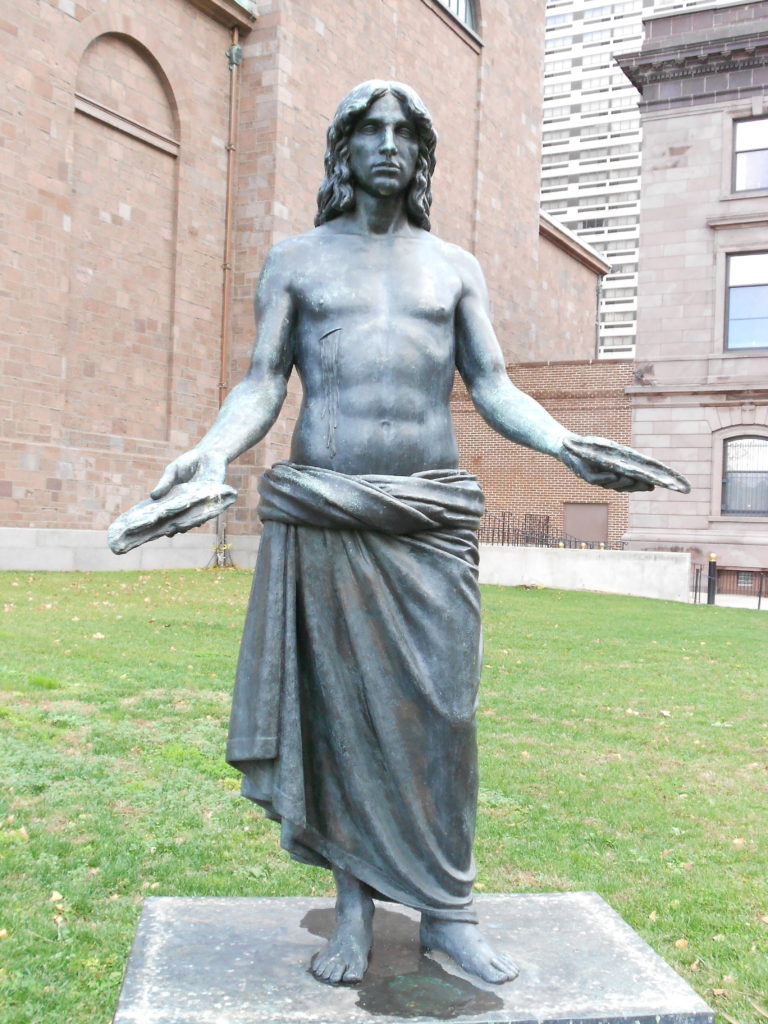
About the Words of Distribution
This is a question that may need a Frank Answer: what is the history of the distribution formulae, “The body of Christ given for you, the blood of Christ shed for you?” I’m not asking for the specific wording–I’m aware of confessional differences in how the formulae are stated–nor am I looking for a theological justification of the wording (“for you,” etc.). I mean the usage of distribution formulae . Was there ever a time, post-Apostolic era, when the formulae were not used and the Supper was distributed in silence, perhaps accompanied only by chant or song?
Answer:
The only Eucharistic text in the post-apostolic era is in the Didache, chapters 9 and 10. This was a Eucharist celebrated in the context of an actual meal, as in 1 Corinthians 11’s deipnon and symposion. The bread broken and cups (at the beginning and end of the meal) were shared, not administered. So there were no distribution formulae.
Probably the next oldest texts were East Syrian in the 3rd century, of which the most prominent was the anaphora of Addai and Mari. As in the Didache prayers, no words of institution were recited (at least as far as the best textual evidence is concerned) and there were no distribution formulae.
When we come to The Apostolic Tradition, we do have words of distribution. The Eucharist in the Communion after Baptism includes cups of water and milk and honey as well as the cup of wine. The Latin text (probably 5th century, but maybe earlier) clearly indicates that the bishop gives “an explanation about all these things to those who receive.” The Sahidic, Arabic, and Ethiopic versions agree with this. Breaking the bread the bishop says, “Heavenly bread in Christ Jesus.” Those who receive say “Amen.” For those who receive the three cups the bishop says, “In God the Father Almighty.” “Amen.” “And in the Lord Jesus Christ.” “Amen.” And in the Holy Spirit.” “Amen.” The Sahidic, Arabic, and Ethiopic texts agree about words distributing the bread: “The bread of heaven, the body of Christ Jesus.” But they use the formula “This is the blood of Jesus Christ our Lord” over the cups.
The Egyptian Canons of Hippolytus have “This is the body of Christ” and “This is the blood of Christ.” The church order called the Testamentum Domini (maybe ca. 250) has: “The body of Jesus Christ, the Holy Spirit, for the healing of soul and body.” There are no words with the distribution of the cup.
The Apostolic Constitutions, Book VIII (ca. 380) has the bishop giving “the offering,” saying, “The body of Christ.” R/ Amen. The deacon gives the cup, saying “The blood of Christ, the cup of life.” R/ Amen.
Theodore of Mopsuestia (bishop 392–428), in his Mystagogic Catecheses preached to the newly baptized, reports that the bishop says “The body of Christ” when administering the cup and the communicant says “Amen.” He says it is the same with the administration of the cup, although he cites no formula of distribution. As commentaries on the liturgy, the mystagogic catecheses of the fathers don’t necessarily give us all the liturgical texts.
These church orders and catecheses suggest that the words of distribution serve a catechetical purpose. We don’t know if they were used at all Eucharists at that time, but eventually words at the distribution were provided.
In the Byzantine tradition each communicant is named in the distribution. E.g. John, servant of God, is receiving the body and blood of Christ.” The baptismal name is used, indicating the connection between the two sacraments.
In the Roman sacramentaries after the time of Pope Gregory the Great, as devotion turned inward, communicants say the prayers “The body of our Lord Jesus Christ preserve my soul for everlasting life” and “The blood of our Lord Jesus Christ preserve my soul for everlasting life” as each element is received.
Martin Luther retained these words in his Formula Missae. However, in his Deutsche Messe there are separate distributions of the bread immediately after the words of institution were chanted over the bread while the German Sanctus is sung and of the cup after the words of institution over the cup were chanted while the German Agnus Dei is sung. There are no separate individual words of distribution.
Johannes Bugenhagen based his North German and Danish church orders on the German Mass and there were no words of distribution. Other Lutheran church orders did have words of distribution, including the Swedish Mass of Olavus Petri, which turned the Roman prayer into a word of blessing by the minister—from “preserve my soul” to “preserve your soul.”
The Reformed Liturgies had no words of distribution. The Anglican Prayer Books had one formula of distribution in 1549 (suggesting the real presence — mention of body and blood), another formula in 1552 (suggesting a Zwinglian position with no mention of the elements — receive “this”), and a merger of these formulas in 1559 to reflect the Elizabethan via media. This is a reminder that the words of distribution have also served to shore up the doctrine of the sacrament.
Formulas of distribution returned in Lutheranism in the late 17th and 18th centuries adding pietistic or rationalistic tropes. Some pastors added Scripture citations as they administered the elements.
The Common Service (1888, 1917, 1958) simplified this development with “The body of Christ, given for thee” and “The blood of Christ, shed for thee.” The old Roman prayer formula was turned into a blessing after Communion, recited either table by table or after all have communed. “The Body of our Lord Jesus Christ and his precious Blood strengthen and preserve you unto eternal life.” This post-communion blessing seems to be a Lutheran peculiarity.
I can see eliminating the communion blessing, but having some words of distribution has a long history in the church. Sometimes, however, there has been theological mischief in such words in terms of tweaking doctrine or emotions. The Lutheran emphasis has been on the pro nobis—“for you.” I think the simple words, “The body of Christ” and “The blood of Christ,” with no further explanation would be best. Communion may be administered silently or with the singing of psalms, hymns, or spiritual songs that serve to focus devotion during the distribution.
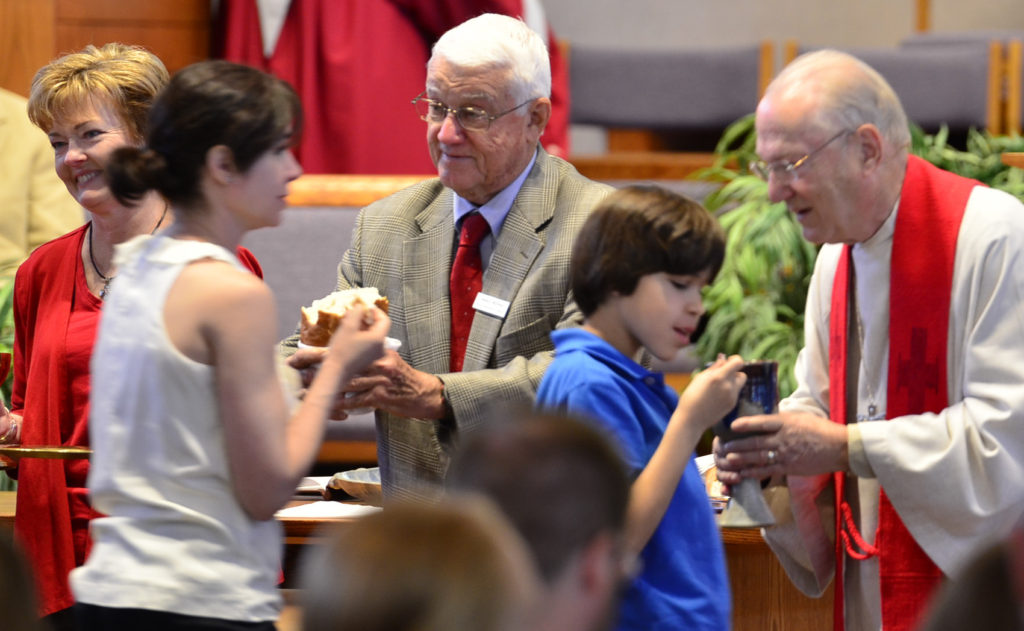
Communion distribution in Hope Presbyterian Church, Austin, Texas
Pastor Frank

